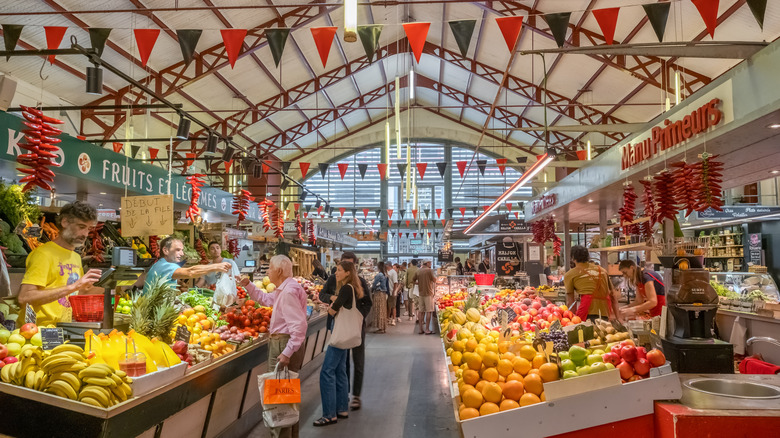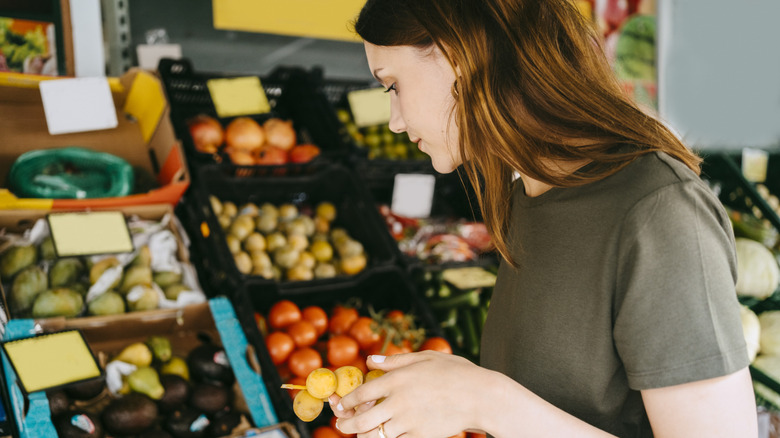Rick Steves Reveals The Hidden Price Difference You Should Look For At European Markets
Grocery stores are a must-visit in new countries. You never know what surprises you'll find on the shelves. But if you're American and heading to Europe, there are a few things to know before you walk through those sliding doors. Rick Steves, the beloved travel guru known for his practical Europe tips, advised fans in an article on his website to pay close attention to how food is priced, because the numbers might not mean what you think they do.
You might be used to clear sticker price on every item — $2.49 per avocado, $3.99 for a bag of apples — but at many open-air markets and grocery stores across Europe, the price tag you see on produce, cheese, meats, or deli items is usually per kilo (kilogram), not per pound or per unit. That makes a big difference. A wedge of cheese marked "€16" might seem steep, until you realize it's €16 per kilogram, and your slice may only be, say, 200 grams (which would be about €3.20, which is about $3.73 USD). Misreading that could mean thinking you're spending €16 on a single piece of cheese –– which is definitely not the case.
Not everything is priced strictly by the kilo, though. Steves also shared that some items are listed by 100 grams (often labeled "100g" or "hg"), 500 grams, or even by the quarter kilo. Meats, pâtés, olives, and cheeses commonly follow this pricing format. Other items may be priced per bunch, per container, or, very rarely, per piece.
How can you avoid being surprised at checkout in Europe?
What to do in a moment of confusion? If you don't see a price tag that reads "kg" for kilogram or "g" for gram, don't hesitate to ask the vendor. Even if you don't speak the language, simply asking, "Kilo?" and pointing can go a long way. Second, use the scale. Most produce stands and grocery stores have digital scales, which will print a sticker with the price based on the exact weight. In some smaller or open-air street markets in Europe, the vendor will be the one to weigh the item, so it's okay to ask for a certain quantity. Third, keep pounds off your mind. A kilo is about 2.2 pounds, so prices may seem high if you're subconsciously thinking in pounds. Divide the price by two to get a rough estimate of the cost per pound.
Finally, we have good news about shopping in Europe. American travelers might expect the final price to be higher than what's listed, but in Europe, that's rarely the case. Unlike in the U.S., where a $3 item might ring up closer to $3.20 after sales tax, most EU countries include VAT (Value Added Tax) directly in the listed price. That means no mental math at the checkout, and more importantly, no surprises. While VAT rates vary by country, they are always factored in and price tag will reflect the final price. Simple as that.

